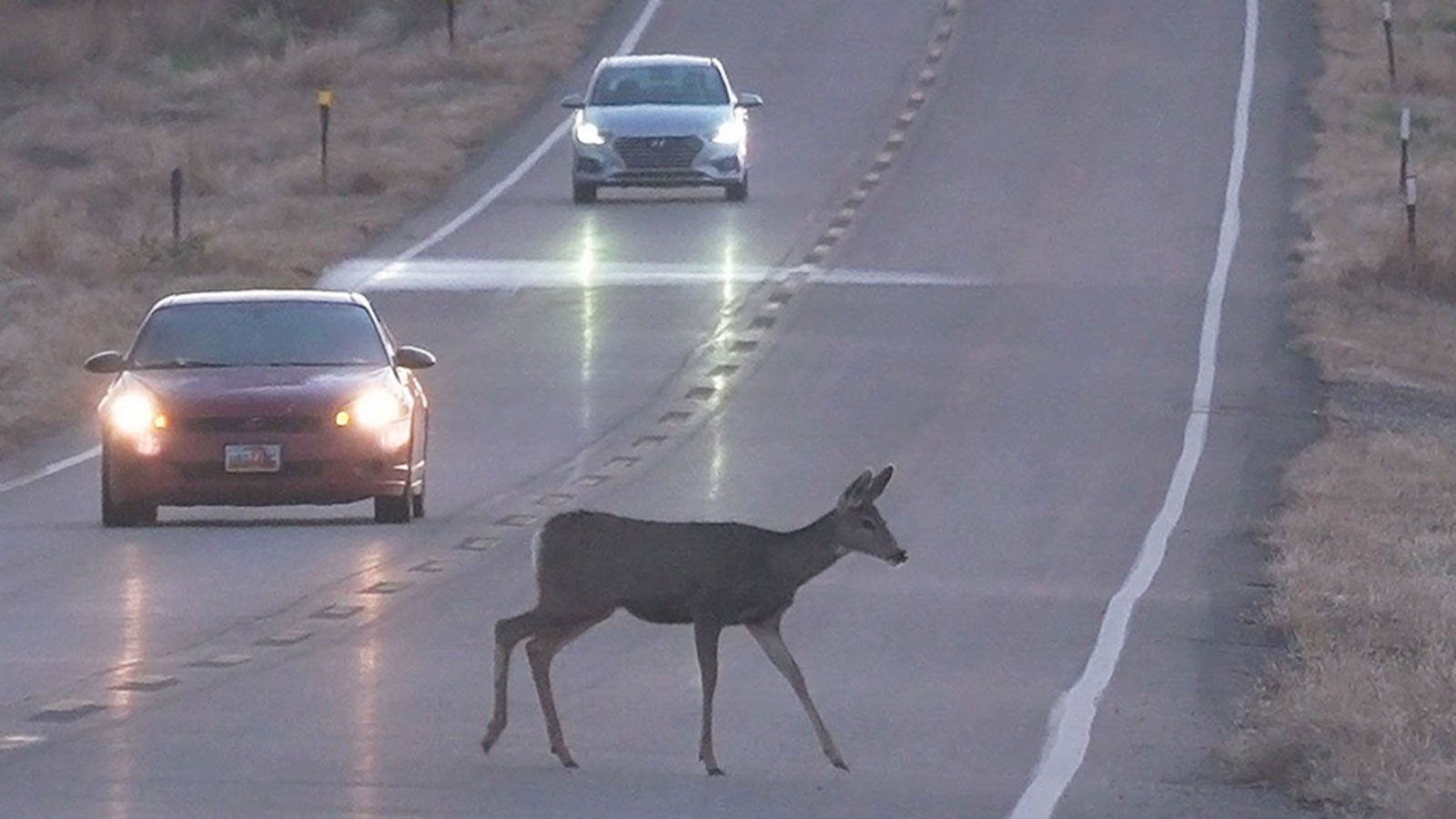New Research Sheds Light on How Artificial Lighting Can Influence Risk of Roadkill
By Lael Gilbert |
New research tracked mule deer as they attempted to cross roads in Utah and found that the animals acted on instinctual behaviors that tended to put them at higher risk for collision with vehicles. (Photo Credit: Utah.gov)
Mule deer are astonishingly adaptable animals. They dine on both desert sagebrush and garden spinach, endure sub-zero winters and sweltering summers and make their homes in suburban bluegrass and high-elevation wildlands. But one thing they can’t seem to master in a human-dominated environment is how to cross a busy road.
Crossing high-speed roads is a necessary risk for mule deer in Utah, whose range and seasonal migration patterns require them to move in ways that often cross paths with human traffic. Roadways are well-documented threats to wandering wildlife. Newly published research from David Stoner in the Quinney College of Natural Resources sheds light on instinctual behavior in mule deer that creates a higher probability for collision — their preference for crossing roads along the darkest stretches.
The team pulled seven years of data from GPS radio collars worn by deer in and around Salt Lake City, and compared it with NASA satellite information measuring artificial light in specific locations. They found that the deer tended to make their way across roads where surrounding artificial light was especially low. This behavior also puts them at greater statistical risk for vehicle collisions, say the authors.
The team also found that although mule deer preferred to avoid crossing higher-speed roads, their winter ranges were inevitably bisected by highways that increased their risk for mortality.
“In November, deer migrate to low elevation winter ranges to avoid deep snow,” Stoner said. “This coincides with shorter days, when commuter traffic is heaviest during twilight and early evening hours when deer are most active. Combine that with long, rural stretches of high-speed roads, and deer are highly vulnerable to collisions with vehicles.”
Deer that use winter ranges near agricultural lands or low-density housing also had a higher chance of becoming roadkill.
The apparent deadly combination of winter circumstances raises the risk for roadkill mortality in Utah’s mule deer: a preference for crossing dark roads, increased proximity to higher speed roads, and higher-than normal human activity. Compounding these characteristics, winter also brings both less daylight (with deer attempting a higher number of crossings at night), and an increase in risk-taking behavior associated with the breeding season, Stoner said.
“Deer aren’t going to change their instinctual behavior for these kinds of things,” Stoner said, “but if we can better predict where deer tend to cross, we can design roadways that allow for natural movements and reduce the likelihood of accidents.”
Linking an understanding of mule deer behavior around roads with specific factors opens an opportunity to design interventions that better support wildlife with things like targeted placement of fences, signs to inform drivers, improved lighting and wildlife crossing structures.
Darker and higher-speed roads are the most dangerous to deer and drivers, and roads bisecting crucial shrub habitat have high levels of use by mule deer. Targeting these roads would help reduce the risks associated with low driver visibility, short stopping distances, and increased deer presence, Stoner said.
The lead author on the research is Kaitlyn M. Frank, and the team included William Currie and Neil Carter from the University of Michigan, Mark Ditmer from the USDA Forest Service, and Daniel Olson from the Utah Division of Wildlife Resources.
WRITER
Lael Gilbert
Public Relations Specialist
Quinney College of Natural Resources
435-797-8455
lael.gilbert@usu.edu
CONTACT
David Stoner
Researcher
Wildland Resources Department
david.stoner@usu.edu
TOPICS
Wildlife 141stories Land Management 123stories Animals 90storiesComments and questions regarding this article may be directed to the contact person listed on this page.







